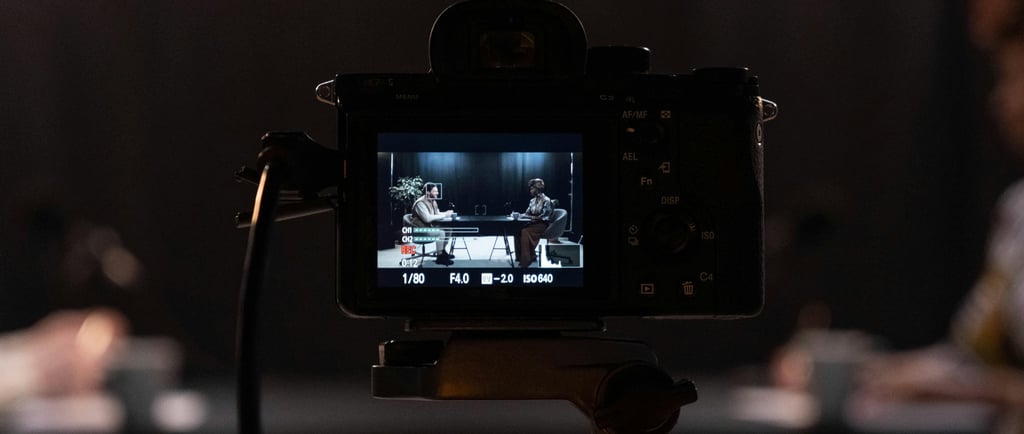The Impact of Family YouTubers: How They Shape Our Lives and Decisions
Youtube Vlogs
7/31/20255 min read


Family YouTubers have dominated the internet by posting their everyday lives as entertainment for countless individuals. They post items such as morning routines, parenting advice, luxury getaways, and prank wars, providing individuals with an overview of family life. But they do more than entertain; they significantly impact their audience by altering the way individual’s parent, what they purchase, and even what they believe. The influence of family vloggers is larger than most viewers ever consider, altering the way individuals raise their children and how they spend their cash. While some of that power is beneficial, providing inspiration and a feeling of belonging, it also creates unrealistic expectations, promotes purchasing more goods, and creates issues with privacy and exploitation.
The Allure of the Ideal Family Life
One of the big reasons that family YouTubers have so many subscribers is that they show a perfect version of family life. They often have clean kids, clean houses, and fun adventures—so it seems like everything is perfect and easy. For parents and viewers, it can be something to anticipate, but it can also be disappointing.
When everyone is seeing these perfect, happy moments all the time, they can start comparing their lives to those impossible standards. A parent with tantrum issues can feel inadequate when watching a YouTuber's kid quietly comply with every instruction. A tight-budget family can feel pressure to match pricy vacations and pricy toys featured in videos. This comparison trap can cause stress, self-doubt, and even financial problems as people try to replicate what they see on the web
The problem isn't so much the comparison; it's the dishonesty. Most family vlogs cut out fights, crying, and everyday problems, giving a false representation of what life is really like. While reality television shows drama, family YouTube channels like to show good times, so their life appears to be perfect. This creates a negative cycle in which everyone thinks their own families must be as perfect, which makes them feel guilty and angry unnecessarily.
Parenting Styles Shaped by YouTube
But yet another big influence that family YouTubers have on the audience is by providing parenting tips. Everyone, especially new parents, look for help from these channels. From potty training children to homeschooling to disciplining, family vloggers usually give their own personal suggestions, which viewers can follow without thinking if they actually work.
There are some YouTube influencers who discuss "gentle parenting," and then there are those who employ more authoritarian parenting methods. Fans will mimic these techniques without considering if they are right for their child's temperament or their own parenting philosophy. The issue is that most family YouTubers are not child psychologists or parenting experts—they're just sharing what has worked for them. But their massive audiences lend them a voice that sounds expert, and parents end up listening without questioning.
And then there is the problem of marketing parenting concepts on YouTube. Various baby gadgets, learning toys, and kids’ equipment are usually promoted, and parents feel that they need all these to raise their children appropriately. This puts additional pressure on them to spend money on things that are not even beneficial.
Consumerism and the Need to Purchase
Family YouTubers influence not just how kids are brought up but also how individuals spend their money. The majority of channels have shopping hauls, sponsored products, and "must-have" lists to donate. Kids who watch the videos tend to ask their parents to buy the same toys, clothing, and devices that the YouTuber children are playing with.
This is a strong influence because it becomes personal. Unlike typical commercials, family YouTubers present products in a manner that people can connect to—showing how they incorporate them into their daily lives. A parent may look at a YouTuber's kid playing with a STEM toy and smile, thinking, maybe this will make my kid smarter. A teenager may watch a back-to-school video and feel compelled to purchase the same cool backpack.
The majority of family YouTubers make money through affiliate marketing and sponsorships by selling products. While this idea is fine in principle, it makes it hard to tell when a real recommendation is or not an advertisement for money. Younger audiences, in general, do not realize when they are being sold a product, and thus they are vulnerable to buying products.
The Moral Issue of Employing Children for Material Purposes Perhaps most contentious among family YouTube channels is the exploitation of children as the main attraction. Several of these have grown up on camera, their tantrums and first day of school broadcast to millions of strangers. Though it is great content, it also raises substantial ethical concerns.
Kids cannot consent to being taped and posted online. They can later resent having their intimate moments put before the world for all eternity. Some former YouTube children have complained of being exploited, having their privacy invaded, and feeling obligated to appease the camera. There is also the risk of web predators identifying family vlogs, as some shows post too much personal information such as the names of schools and home addresses.
In spite of these issues, the majority of family YouTubers remain filming their children since it brings about views and money. Platforms like YouTube have minimal controls to protect child performers, and hence parents usually remain the sole individuals watching over the amount of their children's exposure. This absence of control has resulted in demands for stricter controls, including the child labor laws of the typical entertainment.
The Parasocial Relationship: Why Fans Feel So Connected
In contrast to Hollywood celebrities, family YouTubers expose intimate, everyday moments, so that audiences feel like they are part of the family. That creates a parasocial relationship—a one-way emotional bond where audiences feel close to people they have never met.
This connection makes family YouTubers even more influential. Fans might stick up for their favorite vloggers in online forums, believe everything they say as gospel, or imitate the way they live. Some even send gifts, send money, or plan vacations to meet up with these families in real life.
This is an enjoyable fandom, but it can also become unhealthy fixation. A few fans become too invested in these families and get really upset when a YouTuber couple splits up or a child grows up and is no longer in the videos. Others will abandon their own lives in an attempt to live through these online families vicariously.
Balancing Pleasure with Critical Thinking
Not all family YouTube channels are bad—there are funny, relaxing, and even educational ones. The trick is to watch them with care. Here are some tips on how to watch family vlogs without being negatively impacted by them:
Keep in mind it's edited. What you're seeing is a highlight reel, not actual life.
Seek parenting advice. Just because someone on YouTub vlogs about it, doesn't make it the best for your family.Avoid purchasing things. Ask yourself whether you truly need some item or whether a video is simply making you desire it. Support ethical producers. Identify family networks that respect their children's boundaries and privacy. Conclusion Family YouTubers have a wonderful influence on their audience. They have the power to change the way people raise their kids, manage money, and think. They can make their videos entertaining and inspiring, but one has to keep in mind that these videos are being recorded so they look good and may have some negative impact. By watching cautiously and placing boundaries, viewers can enjoy family vlogs without letting them influence their actual choices.
Discover all the information you need in one place.
© 2024. All rights reserved @ PictorialNuggets.com


